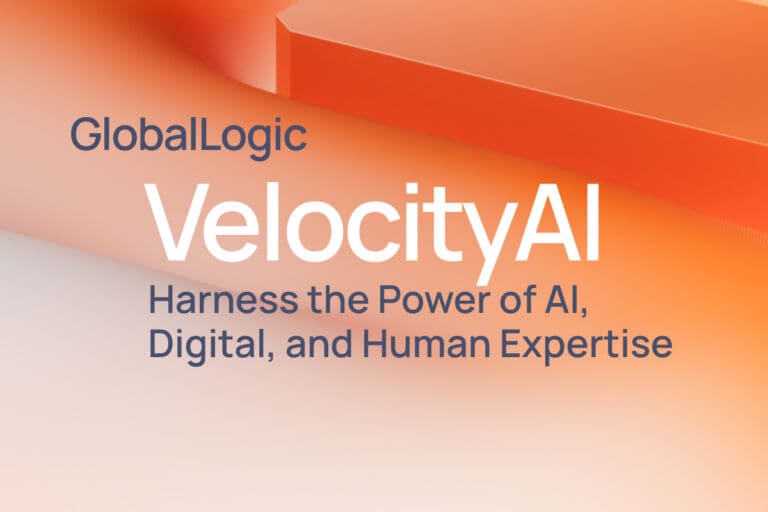- Services
Technology Capabilities
Technology Capabilities- Product Strategy & Experience DesignDefine software-driven value chains, create purposeful interactions, and develop new segments and offerings.
- Digital Business TransformationAdvance your digital transformation journey.
- Intelligence EngineeringLeverage data and AI to transform products, operations, and outcomes.
- Software Product EngineeringCreate high-value products faster with AI-powered and human-driven engineering.
- Technology ModernizationTackle technology modernization with approaches that reduce risk and maximize impact.
- Embedded Engineering & IT/OT TransformationDevelop embedded software and hardware. Build IoT and IT/OT solutions.
- Industries
- GlobalLogic VelocityAI
- Insights
BlogsDecember 16, 2024Gene LeybzonAccelerating Digital Transformation with Structured AI Outputs
This code produces the following output that can be imported into the candidate trackin...
 BlogsOctober 30, 2024Yuriy Yuzifovich
BlogsOctober 30, 2024Yuriy YuzifovichAccelerating Enterprise Value with AI
Discover how financial services integrations are transforming from standalone offerings...

- About Us
Press ReleaseGlobalLogicMarch 11, 2025GlobalLogic Launches VelocityAI to Harness the Power of AI, ...
VelocityAI combines advanced AI technologies with human expertise, helping businesses r...
 Press ReleaseGlobalLogicJanuary 10, 2025
Press ReleaseGlobalLogicJanuary 10, 2025GlobalLogic Announces Leadership Change: Srini Shankar Appointed ...
SANTA CLARA, Calif.–January 10, 2025– GlobalLogic Inc., a Hitachi Group Com...

- Careers
Published on June 15, 2022Accelerating Data Platform Adoption & Frictionless Use Across the Enterprise
View all articles Rahul BarikSenior Solution Architect, TechnologyShareRelated Content
Rahul BarikSenior Solution Architect, TechnologyShareRelated Content Ravi Thummarukudy24 April 2025
Ravi Thummarukudy24 April 2025 Sanjeev Azad17 April 2025View All Insights
Sanjeev Azad17 April 2025View All Insights GlobalLogic10 April 2025
GlobalLogic10 April 2025Let's start engineering impact together
GlobalLogic provides unique experience and expertise at the intersection of data, design, and engineering.
Get in touchAnalyticsData EngineeringCross-IndustryIntroduction
A data platform is one of many parts of an enterprise city map. Even though it’s not the only platform, it’s a significant piece of an enterprise city map that helps teams meet different business objectives and overcome challenges.
When dealing with a data platform, finding the hidden meaning, relationships, and embedded knowledge can still be challenging when attempting to realize the data’s value.
Handling big data or real-time unstructured data presents challenges across collection, scalability, processing, management, data fragmentation, and data quality.
A data platform helps enterprises move information up the value chain by helping lay the foundation for powerful insights. Not only does a data platform pull data from external and internal sources, but it also helps to process, store, and curate the data so that teams can leverage the knowledge to make decisions.
The central aspect of leveraging a data platform is to consider it as a horizontal enterprise capability. Teams across the organization can use the data platform as a centralized location to aggregate data and find insights for specific use cases.
On its own, a data platform cannot realize its full potential. Are you setting it up for maximum impact?
While the goal of a data platform is to remove silos in an organization, it is difficult to do so until the organization enables a complete data platform. Then different units can leverage the platform functions so departments will have easy data sharing capabilities.
In this post, we discuss the principles that help ensure teams can optimize their data platform for use across the enterprise.
At GlobalLogic, we refer to these principles as the ‘Synthesize and Syncretize Paradigm’ for implementing data platforms.
These principles help weave together composability aspects into the data platform and lakehouse architectures. Additionally, it utilizes data mesh and data fabric principles with appropriate governance. This paradigm allows the implementation of a 360-degree data platform with enablers for easier adoption and uses across the enterprise as it facilitates the synthesis of platform components for syncretic use.
Principles
Enterprise Data Platform as the Core Foundation
The core data platform will form the foundation and own all the capabilities and technology stack to enable the following:
- Data storage
- Data ingestion interfaces for ingesting data into the storage layer
- Data processing during the ingestion and post-ingestion phases to transform and enrich the data
- Data access interfaces
- Endpoints for data ingress and data egress
- Orchestration and scheduling
- Data governance and data cataloging
- Control pane, monitoring, and security
- Data querying and data analytics
Teams will need to enable continuous delivery of new data platform features with centralized governance.

The Interplay of Domains & Data Products
Domains must be first-class concepts in the entire setup.
Teams can link domains to business aspects, data origin, use cases, source data, or consumption. Additionally, teams can enable particular feature sets within domain systems depending on the need.
Domains will vary from organization to organization since businesses closely tie domains to their organization’s structure and design.
The core data platform foundation must be compatible with data products and domains. Teams can build their own data products for a domain on top of the core data platform foundation. Teams can also deliver data products in an agile fashion for incremental business value realization.
Microservices Based Architecture
The core data platform foundation will have a decentralized microservice architecture. This architecture provides API, messaging, microservices, and containerization capabilities for operationalizing data platform features.
The decentralized microservice architecture will enable the enterprise data platform so teams can use it as a central base with a decoupled architecture.
A team can leverage these capabilities to ensure the platform is resilient, elastic, loosely coupled, flexible, and scalable.
This will allow different domain teams to operationalize the data and features across the enterprise for their feature sets.
They also enable data and decision products in a domain on top of the unified data platform to access reliable data ubiquitously and securely.
Composability
The ability for teams to select the tools and services in a frictionless manner for their data products within a domain is crucial since it allows teams to assemble the required components. In addition, a composable architecture will enable teams to fabricate the necessary elements to deliver data and decision products.
This architecture paradigm will utilize both the infrastructure aspects as well as microservices.
A microservices-powered composable architecture for infrastructure, services, and CI/CD processes will allow separate teams and domains to utilize the same data platform infrastructure stack. The key to delivering a composable architecture is when the team focuses on DevOps and automation practices.
This will also enable dynamic provisioning with the definition of scalability parameters during the provisioning process itself.
Self Serve Data Platform Infrastructure
Teams should be able to use the data platform technology stack, features, and infrastructure. Teams can use a “No Code” or a “Low Code” approach with portals and self-service capabilities to enable these functions.
This principle will help teams reduce difficulties and friction when using and provisioning their environment. This will also help teams leverage the data platform to become a first-class asset across the enterprise and become the source of accurate data.
Discoverability & Data Sharing
Discovering and utilizing the platform and data assets elements is crucial to enable ease of synthesizing the right set of necessary components.
Data management is essential to catalog and manage data assets and datasets. Another important component is automation. It’s crucial to use automation for auto-discovering, tagging, cataloging and profiling data, and data classification with relationship inferences. This will enable teams to discover and utilize data assets efficiently.
Similarly, another key to discovering the capabilities is a catalog of available platform elements and features. This can cover the data connectors, existing data pipelines, services, interfaces, and usage guides.
The data platform also needs to have mechanisms for data exchange to ensure teams can effortlessly share data with appropriate access controls applied.
Centralized Governance
Centralized governance is a pillar to enable interoperability between various domains and teams and their data products. It will also ensure proper controls on new data platform features development and operationalization based on the actual needs of the teams so that they can quickly realize business value. This will act in conjunction with the data governance processes, data stewardship, and data management to ensure teams can access and share datasets in a controlled manner.
360-Degree Data Platform to power business with GlobalLogic
A data platform that leverages the above principles enables frictionless platform use and thereby accelerates utilization of the platform capabilities across an organization and value realization.
At GlobalLogic, we help our partners implement end-to-end modern data platforms with our big data and analytics services. Reach out to the Big Data and Analytics team at practice-bigdataanalytics-org@globallogic.com – let’s explore your data platform implementation options and how to drive the adoption of data platforms across your organization.
